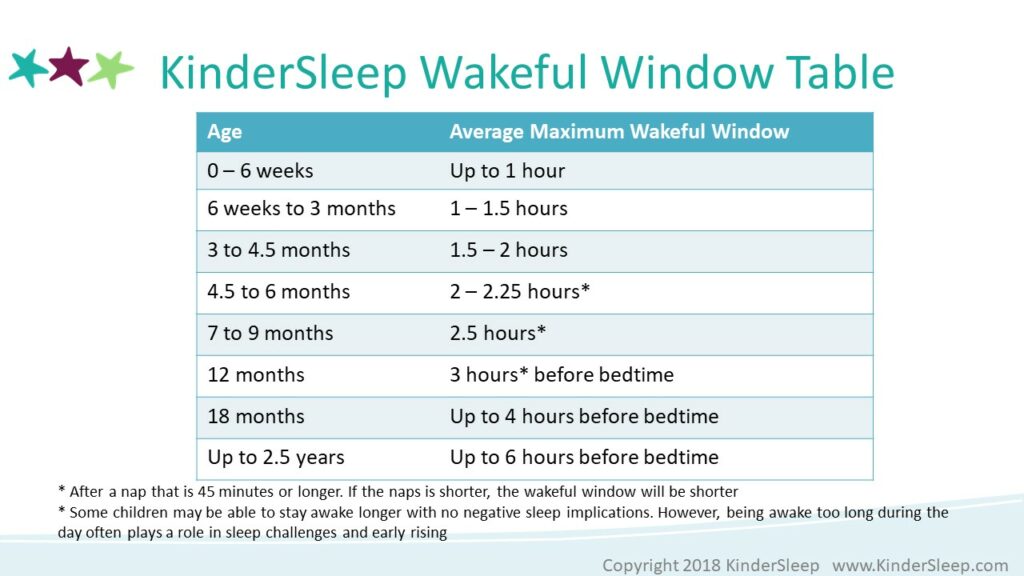
Ask any Sleep Expert who follows the Wakeful Window or Awake Time/Nap Gap theory, you will find a wide variety of recommended wakeful window suggestions. In part, this is due to the many factors that impact sleep and the fact that every child is different. For example, sleep pressure plays a big role in a child's ease in falling asleep, however, falling asleep easily at bedtime does not mean that the child is not going to bed overtired (with Adrenaline & Cortisol in their system.) This chart is one that we have developed over 20 years of working with families and polling our Sleep Coach students and colleagues. It is the average that we find but you may want to add or subtract 15 minutes and also experiment with various timings. For some children, you can also observe sleep signs or energy levels that can provide clues to the child's wakeful window.
The key time to focus on with wakeful windows is always right before bed. This is where it has the most value as going to bed in the evening without being overtired may also prevent night wakings, disturbed sleep, long night wakes, and early rising. Working on the last wakeful window of the day may be all that is needed to improve sleep.
Figuring out the wakeful window can be challenging and can take a few weeks to figure out. We get a lot of calls from parents who share that they don't see sleep signs in their children and have difficulty preventing overtiredness. This is actually common with families seeking sleep help and common with children that have more alert temperament. If you want some help in unravelling your child's sleep and wakeful window, book a free consult with us and we can guide you through it.
Andrea and Tracy

